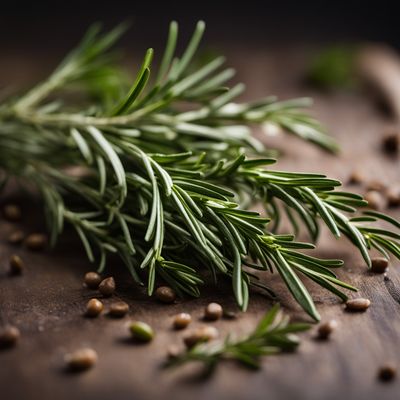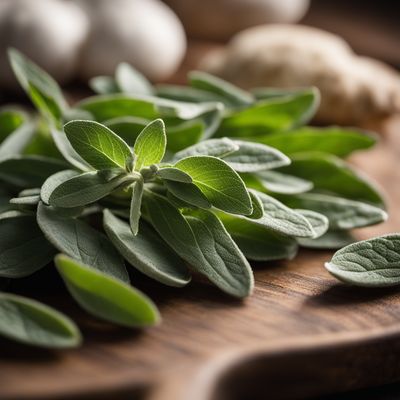
Ingredient
Sassafras leaves
The Aromatic Wonder: Unveiling the Secrets of Sassafras Leaves
Sassafras leaves are characterized by their vibrant green color and unique three-lobed shape. They possess a fragrant aroma reminiscent of root beer and a slightly sweet, citrusy taste. The leaves have a smooth texture and can be used in both fresh and dried forms. When dried, they become brittle and crumble easily, releasing their aromatic oils.
Origins and history
Sassafras leaves have a long history, particularly in North America, where they were used by Native American tribes for their medicinal properties. The leaves were later introduced to Europe by Spanish explorers in the 16th century. In the culinary world, sassafras leaves gained popularity in the southern United States, where they are a key ingredient in traditional dishes like gumbo and filé powder.
Nutritional information
Sassafras leaves are low in calories and fat. They contain essential oils, antioxidants, and trace amounts of vitamins and minerals, including vitamin C and calcium.
Allergens
There are no known allergens associated with sassafras leaves.
How to select
When selecting sassafras leaves, look for fresh leaves that are vibrant green in color and free from any signs of wilting or discoloration. If purchasing dried leaves, ensure they are stored in airtight packaging to maintain their freshness.
Storage recommendations
To preserve the freshness of sassafras leaves, store them in a cool, dry place in an airtight container. Dried leaves can be kept for up to a year, while fresh leaves should be used within a few days.
How to produce
Sassafras trees can be grown from seeds or propagated through root cuttings. They thrive in well-drained soil and prefer partial shade. However, it's important to note that the use of sassafras oil, derived from the tree's roots, is regulated due to potential health risks.
Preparation tips
Sassafras leaves are commonly used to infuse flavor into soups, stews, and sauces. To release their aromatic oils, gently crush the leaves before adding them to your dish. They can also be used to make a traditional filé powder by drying and grinding the leaves into a fine powder, which is then added as a thickening agent to gumbo.
Culinary uses
Sassafras leaves are primarily used in traditional Southern cuisine, particularly in dishes like gumbo, jambalaya, and crawfish boils. They are also a key ingredient in filé powder, which is used as a thickening agent and flavor enhancer in Creole and Cajun cooking.
Availability
Sassafras leaves are commonly available in the southern United States, particularly in states like Louisiana and Mississippi, where they are used in local cuisine. They can also be found in specialty spice shops or online.
More ingredients from this category » Browse all

Lemon myrtle (fresh herb)
Citrus Sensation

Basils and mints
The Aromatic World of Basils and Mints

White ginger
The Fragrant Spice: Unveiling the Delights of White Ginger

Evening primrose leaves
The Medicinal Marvel of Evening Primrose Leaves

Rosemary and similar-
The Aromatic Herb

Chervil and similar-
"The Delicate Herb: Unveiling the Secrets of Chervil and Similar Ingredients"

Tarragon and similar-
The Herb of Elegance

Thyme and similar-
The Aromatic Herb: Thyme and Its Cousins

Chives and similar-
Delicate Allium Delights

Sage and similar-
"The Herb of Wisdom: Exploring the Versatility of Sage and Similar Ingredients"

Wintergreen leaves
The Refreshing Minty Herb

Celery leaves and similar-
The Green Elixir: Unleashing the Power of Celery Leaves